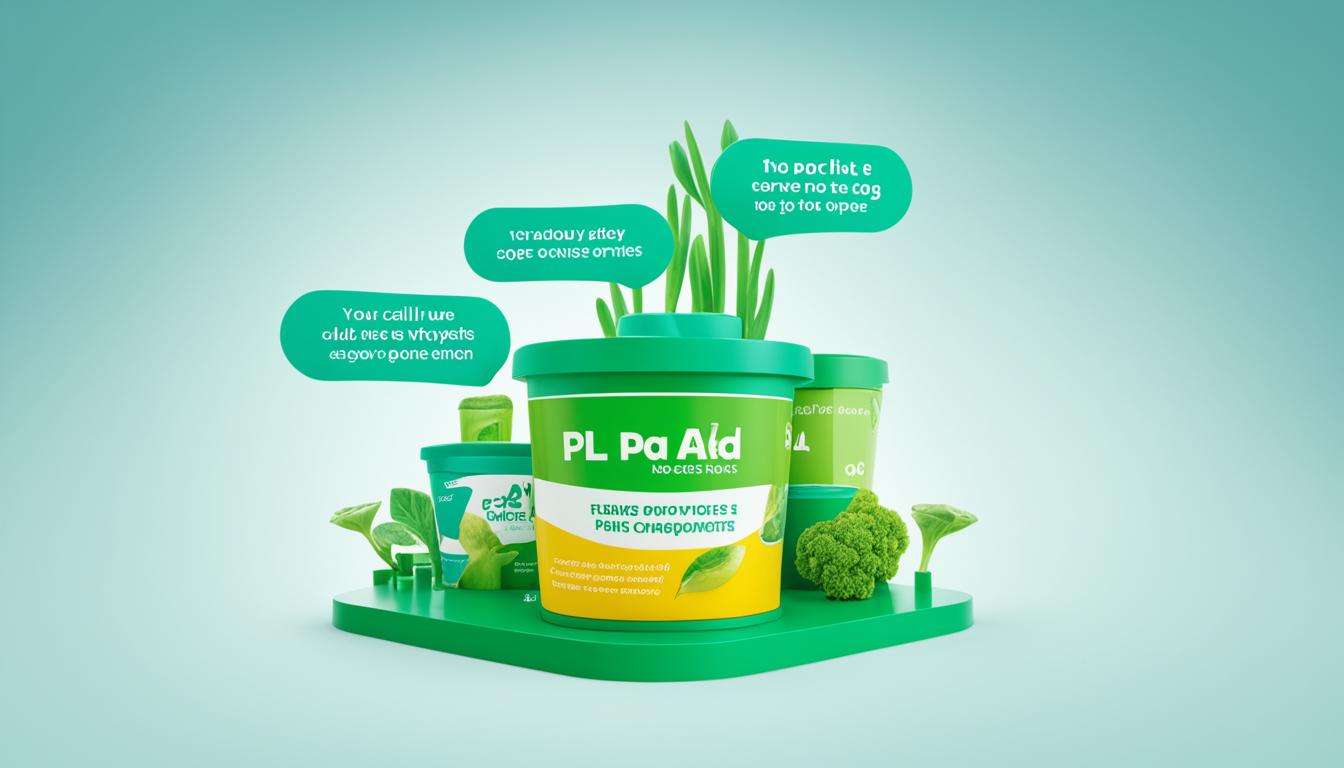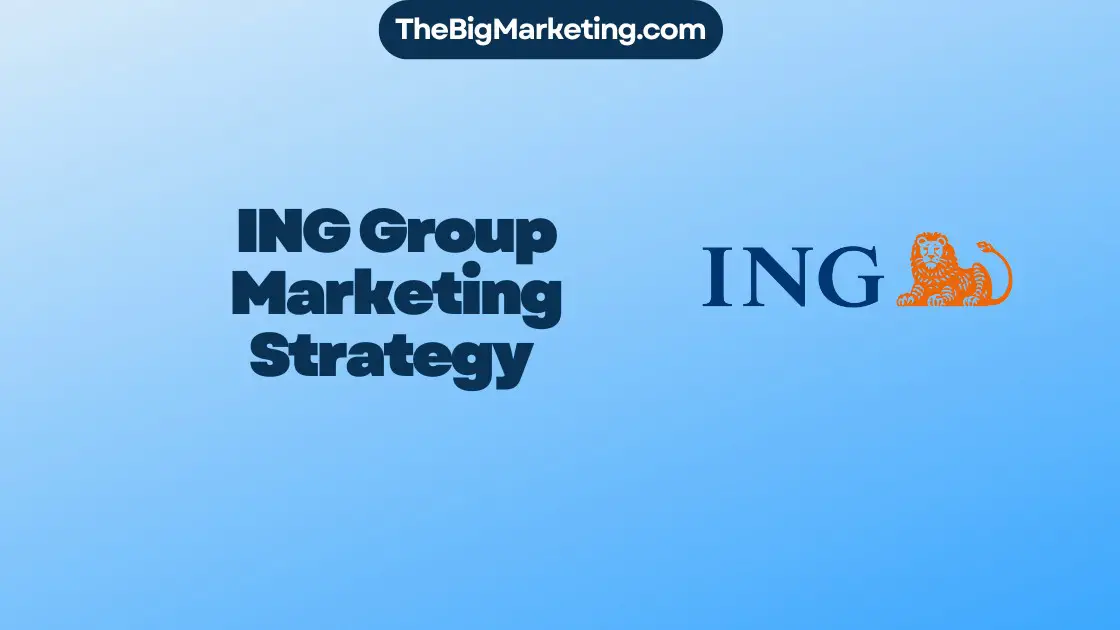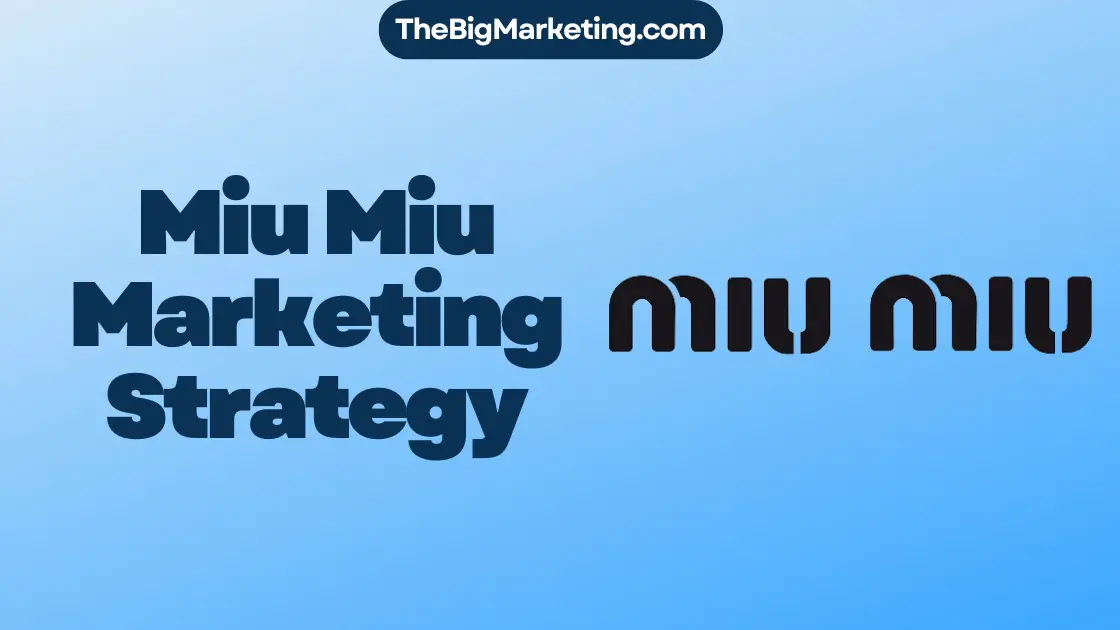A flywheel in marketing is a concept that emphasizes the continuous momentum generated by a satisfied existing customer base. It revolves around the idea of putting customers at the center of marketing efforts to drive expansion and business growth. This approach views customers as assets and focuses on creating a seamless customer experience to keep the flywheel spinning. The flywheel model was popularized by HubSpot and has gained recognition for its ability to enhance customer satisfaction and fuel business success.
Key Takeaways:
- The flywheel concept in marketing focuses on the continuous momentum generated by satisfied customers.
- Putting customers at the center of marketing efforts is essential for business growth.
- Flywheel marketing emphasizes creating a seamless customer experience to keep the flywheel spinning.
- Harnessing the power of the flywheel can lead to increased customer satisfaction and business success.
- The flywheel model has gained recognition for its ability to transform marketing strategies.
The Flywheel Effect: Creating Continuous Momentum
The Flywheel Effect is a concept borrowed from the mechanical principle of using momentum to rotate a flywheel. In marketing, it represents the continuous momentum generated by satisfied customers who act as brand advocates, referring others to the business. This perpetual spin of the flywheel drives business growth and yields positive results.
By placing a strong emphasis on building and maintaining customer loyalty and satisfaction, companies can harness the Flywheel Effect to propel their marketing strategies forward. When customers have a positive experience with a brand, they are more likely to become advocates, spreading positive word-of-mouth and attracting new customers to the business. This organic growth creates a powerful cycle of momentum that keeps the flywheel spinning.
To leverage the Flywheel Effect, businesses need to prioritize customer satisfaction at every touchpoint. This includes delivering exceptional products or services, providing excellent customer support, and continuously improving the overall customer experience. By cultivating a loyal customer base and fostering positive relationships, companies can fuel the Flywheel Effect and achieve sustainable business growth.
Additionally, the Flywheel Effect relies on creating a seamless customer journey that consistently exceeds expectations. By identifying and addressing potential pain points and optimizing each stage of the customer lifecycle, businesses can ensure that customers remain satisfied and engaged throughout their interaction with the brand.
By embracing the Flywheel Effect and focusing on customer satisfaction, businesses can not only drive growth but also build long-term success. In an increasingly competitive market, where customers have more options than ever before, prioritizing the Flywheel Effect can give companies a significant edge.
The image above represents the continuous momentum generated by the Flywheel Effect. Just as a spinning flywheel generates energy and propels itself forward, a satisfied customer base fuels the growth and success of a business.
Understanding the Flywheel Model
The flywheel model is a holistic approach to marketing that revolves around the customer, consisting of three main components: attract, engage, and delight.
Components of the Flywheel Model:
- Attract: In this phase, the focus is on drawing in new prospects through engaging and valuable content. By creating content that addresses their pain points and resonates with their needs, businesses can capture the attention of potential customers and establish a connection.
- Engage: The engage phase emphasizes building relationships with leads to convert them into customers. This involves personalized interactions, addressing their specific requirements, and nurturing them through each stage of the buyer’s journey. By delivering a tailored experience, businesses can increase the likelihood of conversion.
- Delight: The delight phase aims to ensure customer success and satisfaction, turning them into brand advocates. By providing exceptional customer service, delivering on promises, and continuously exceeding expectations, businesses can foster long-term loyalty and word-of-mouth recommendations.
These components work together to create a continuous cycle of attracting new prospects, engaging with them, and delighting customers, which keeps the flywheel spinning and drives business growth.
The image above visually represents the flywheel model and showcases the interconnected nature of its components.
Customer Experience: Fueling the Flywheel
In the flywheel model, customer experience plays a crucial role in fueling the flywheel. By prioritizing customer satisfaction and meeting their needs, businesses can create a positive feedback loop that drives growth. Happy customers are more likely to refer others to the brand, leading to increased customer acquisition and expansion. The flywheel model encourages businesses to focus on delivering a seamless and valuable customer experience at every touchpoint to keep the momentum going.
The Importance of Flywheel in Marketing
Customer experience is an essential component of the flywheel model. When customers have positive interactions with a brand, they are more likely to become loyal advocates who actively promote the business to others. This word-of-mouth referral creates a powerful cycle of customer acquisition and growth. By investing in the customer experience, businesses can not only attract new customers but also retain existing ones, leading to higher customer lifetime value and overall business success.
How Customer Experience Drives Growth
A seamless and valuable customer experience can fuel the flywheel in several ways. Firstly, satisfied customers are more likely to make repeat purchases, increasing revenue and driving business growth. Secondly, these customers become brand advocates who share positive experiences with their networks, leading to new customer acquisitions. Thirdly, a strong focus on customer experience builds trust and loyalty, fostering long-term relationships that generate ongoing revenue and further referrals. By continuously improving the customer experience, businesses can enhance the flywheel’s momentum, achieving sustainable growth and competitive advantage.
Delivering a Seamless and Valuable Customer Experience
To fuel the flywheel through customer experience, businesses must prioritize delivering a seamless and valuable experience at every touchpoint. This involves understanding customer needs and expectations, personalizing interactions, and providing exceptional service. By investing in customer-centric initiatives such as product innovation, personalized marketing campaigns, and efficient customer support, businesses can create a positive feedback loop that drives growth and customer satisfaction.
| Benefits of a Positive Customer Experience | |
|---|---|
| 1 | Increased customer loyalty and retention |
| 2 | Higher customer lifetime value |
| 3 | Positive word-of-mouth referrals |
| 4 | Enhanced brand reputation and trust |
| 5 | Higher customer acquisition through referrals |
| 6 | Improved customer satisfaction and loyalty |
Flywheel Marketing vs. Sales Funnel Marketing: Choosing the Right Approach
Flywheel marketing and sales funnel marketing are two different approaches to customer acquisition and growth. The sales funnel model focuses on moving prospects through different stages of the buying process towards conversion, Sales Funnel Marketing, with less emphasis on post-purchase customer experience. In contrast, Flywheel Strategy, flywheel marketing puts customers at the center and focuses on delighting them to generate referrals and repeat business. While both models have their merits, the flywheel approach prioritizes customer satisfaction and long-term growth.
Sales Funnel Marketing The sales funnel model, as the name suggests, visualizes the customer journey as a funnel-shaped process that starts with awareness, moves to consideration, and ends with a purchase. This model is effective for guiding potential customers down a linear path until they convert. Each stage is designed to push the customer further down the funnel, with a primary focus on driving conversions. However, once a sale is made, the customer’s journey tends to end, resulting in less emphasis on post-purchase engagement and customer satisfaction.
Flywheel Strategy In contrast, flywheel marketing takes a customer-centric approach that views customers as the center of a business’s growth engine. Instead of treating the customer journey as a linear path, it focuses on creating an ongoing positive experience that keeps customers engaged and delighted. This dedication to customer satisfaction leads to repeat business, referrals, and ultimately drives growth. By placing customers at the center, the flywheel strategy nurtures long-term relationships, fostering loyalty and advocacy, which in turn generates organic growth.
Flywheel vs. Funnel While both flywheel marketing and sales funnel marketing have their strengths, the flywheel approach provides a more holistic and sustainable approach in today’s customer-centric marketplace. By prioritizing customer satisfaction, building long-term relationships, and generating positive word-of-mouth, the flywheel model fosters steady growth and brand loyalty. While the sales funnel model focuses on conversions, the flywheel strategy extends beyond the initial sale, focusing on building engagement, retention, and repeat business. Ultimately, the choice between the two approaches depends on the specific goals and priorities of the business.
Key Differences: Flywheel Marketing vs. Sales Funnel Marketing
| Flywheel Marketing | Sales Funnel Marketing |
|---|---|
| Prioritizes customer satisfaction and long-term relationships | Focuses on driving conversions |
| Views customers as the center of growth | Views sales as the primary goal |
| Emphasizes post-purchase engagement and referrals | Focuses on moving customers through the funnel |
| Generates steady growth through customer loyalty | Focuses on converting leads into customers |
Flywheel Success Stories: Lessons from Industry Leaders
Implementing the flywheel marketing model has proven to be a game-changer for numerous companies, resulting in significant growth and success. One such company is Amazon, led by its visionary founder Jeff Bezos. Amazon’s adoption of the flywheel model has had a profound impact on its journey to becoming one of the world’s most valuable companies.
Amazon: Creating Positive Experiences
Jeff Bezos recognized the power of the flywheel model and focused on creating exceptional customer experiences to drive website traffic and attract more brands to sell on Amazon’s platform. By ensuring customer satisfaction each step of the way, Amazon was able to generate a positive feedback loop of customer referrals and repeat business.
Amazon’s flywheel success story serves as a testament to the impact of prioritizing customer satisfaction in driving business growth. By putting customers at the center of their marketing strategies, Amazon was able to create a flywheel effect that propelled them to unprecedented success.
Other Companies Embracing the Flywheel Approach
Amazon is not the only company that has harnessed the power of the flywheel. Many other industry leaders have embraced this customer-centric approach and witnessed remarkable growth. These companies understand that prioritizing customer satisfaction and delivering an exceptional experience leads to increased customer loyalty and advocacy.
- Apple: By consistently providing innovative products and seamless user experiences, Apple has created a strong flywheel effect that drives customer loyalty and generates new referrals.
- Netflix: By focusing on personalized recommendations and delivering high-quality content, Netflix has created a flywheel effect that keeps subscribers engaged and attracts new customers through positive word-of-mouth.
- Tesla: Tesla’s commitment to customer satisfaction and cutting-edge electric vehicles has created a strong flywheel effect, with highly satisfied customers becoming brand advocates and driving further growth.
These success stories from companies like Amazon, Apple, Netflix, and Tesla demonstrate the transformative impact of implementing the flywheel model. Prioritizing customer satisfaction and delivering exceptional experiences can pave the way for long-term growth and success in today’s competitive marketplace.
Implementing the Flywheel Model: Steps to Success
Implementing the flywheel model in your business is a strategic process that requires careful planning and execution. By following these key steps, you can set your business on a path to success with the flywheel approach.
Evaluate Your Current Marketing Strategies
Before implementing the flywheel model, it’s essential to assess your current marketing strategies. Identify areas where customer satisfaction may be lacking and determine how the flywheel model can address those gaps. This evaluation will help you understand where improvements can be made to enhance the customer experience and drive growth.
Set Up the Stages of Your Flywheel
Once you have evaluated your strategies, it’s time to set up the stages of your flywheel. Adapt the attract, engage, and delight components to your specific business needs and target audience. Attract potential customers with compelling content and marketing campaigns, engage them through personalized interactions, and delight them with exceptional experiences that foster loyalty and advocacy.
Establish Metrics and Goals for Each Stage
Establishing metrics and goals for each stage of your flywheel is crucial for tracking your progress and identifying areas of improvement. Define key performance indicators (KPIs) that align with the goals of each flywheel stage. Track metrics such as customer acquisition, customer retention, referral rates, and customer satisfaction to ensure that your flywheel is driving the desired outcomes.
Focus on Continuous Conversion Rate Optimization
Conversion rate optimization (CRO) plays a significant role in the success of the flywheel model. Continuously optimize your marketing efforts at each stage of the flywheel to maximize conversion rates and improve overall performance. Experiment with different strategies, test variations, and analyze results to fine-tune your approach and drive better outcomes.
| Steps to Implement the Flywheel Model | Description |
|---|---|
| Evaluate Your Current Marketing Strategies | Assess your current marketing strategies and identify areas for improvement. |
| Set Up the Stages of Your Flywheel | Adapt the attract, engage, and delight stages to your business. |
| Establish Metrics and Goals for Each Stage | Define KPIs and goals to track progress and measure success. |
| Focus on Continuous Conversion Rate Optimization | Regularly optimize marketing efforts to maximize conversion rates. |
Regularly Evaluate and Tweak Your Flywheel
Implementing the flywheel model is an ongoing process that requires continuous evaluation and improvement. Regularly assess the performance of each flywheel stage, analyze customer feedback, and make necessary adjustments to optimize your approach. Stay agile and adapt to changing customer needs and market trends to ensure long-term success.
By following these steps, you can effectively implement the flywheel model and leverage its power to drive customer satisfaction, referrals, and overall business growth.
Overcoming Challenges: Transitioning to the Flywheel Model
Transitioning from traditional marketing approaches to the flywheel model can present several challenges. One of the main challenges is the need to shift the focus from sales-oriented tactics to customer-centric strategies. This shift requires a change in team alignment, processes, and mindset.
To overcome these challenges, businesses must prioritize customer satisfaction and make it the foundation of their marketing efforts. By putting the customer at the center, businesses can align their teams and create a unified approach to delivering seamless experiences.
Aligning teams is crucial for a successful transition to the flywheel model. This involves breaking down silos and fostering collaboration between departments such as marketing, sales, and customer service. When teams work together towards a common goal, the flywheel can gain momentum more effectively.
Creating unified, seamless experiences for customers is another key aspect of transitioning to the flywheel model. This requires businesses to look beyond individual touchpoints and consider the entire customer journey. By mapping out the customer journey and identifying areas for improvement, businesses can ensure a consistent and satisfying experience at every stage.
The transition to the flywheel model may also require businesses to rethink their processes. Traditional marketing approaches often focus on generating leads and making sales, while the flywheel model emphasizes the importance of customer satisfaction and creating brand advocates. This may involve reevaluating existing processes and implementing new ones that prioritize long-term customer success.
Overall, transitioning to the flywheel model requires businesses to embrace a customer-centric mindset and realign their strategies and processes accordingly. By addressing the challenges head-on and making customer satisfaction a top priority, businesses can successfully implement the flywheel model and drive sustainable growth.
Optimizing the Flywheel Model: The Role of CRO
Conversion Rate Optimization (CRO) is a crucial aspect of maximizing the effectiveness of the flywheel model in marketing. By continuously testing and improving various elements of your marketing campaigns, you can enhance conversion rates and provide better customer experiences.
CRO enables businesses to identify areas of friction within the flywheel and experiment with different strategies to yield better results. By conducting CRO tests at each stage of the flywheel, businesses can fine-tune their approach, ensuring that every stage contributes effectively to customer satisfaction and business growth.
Enhancing Conversion Rates
The primary goal of CRO in the flywheel model is to enhance conversion rates. By analyzing data and user behavior, businesses can identify and address barriers that impede conversion. This can involve optimizing landing pages, simplifying forms, improving website navigation, and streamlining the purchase process. The insights gained from CRO enable businesses to make data-driven decisions and tailor their approach to maximize conversions.
Improving Customer Experiences
Customer experience is a crucial component of the flywheel model, as it influences customer satisfaction and the likelihood of referrals. CRO helps businesses identify areas where customer experiences can be enhanced. By conducting A/B tests, analyzing user feedback, and optimizing various touchpoints, businesses can create more seamless and enjoyable experiences for their customers, increasing the chances of repeat business and positive word-of-mouth.
Optimizing Each Stage of the Flywheel
CRO should be applied to each stage of the flywheel in order to optimize overall performance. By analyzing data and user behavior at each stage, businesses can identify specific areas for improvement. For example, in the attract stage, CRO can help optimize content and channels to attract more qualified leads. In the engage stage, CRO can focus on improving messaging and calls-to-action to drive conversions. In the delight stage, CRO can help enhance customer support and post-purchase experiences, fostering customer loyalty and advocacy.
By continuously optimizing each stage of the flywheel through CRO, businesses can create a seamless and satisfying customer journey that maximizes the impact of the flywheel model.
| CRO Benefits in Flywheel Marketing | CRO Techniques |
|---|---|
| Enhances conversion rates | A/B testing |
| Improves customer experiences | User feedback analysis |
| Optimizes each stage of the flywheel | Data analysis and user behavior tracking |
| Drives customer satisfaction and advocacy | Conversion funnel optimization |
Tracking Success: Measuring the Impact of Flywheel Marketing
To measure the success of your flywheel marketing efforts, it is essential to track and evaluate the impact on your business. By monitoring key performance indicators (KPIs) specific to each stage of the flywheel, such as customer acquisition, retention rates, and customer referrals, you can gain valuable insights into the effectiveness of your marketing strategy.
Tracking Flywheel Success involves tracking the following KPIs:
Customer Acquisition
Measure the number of new customers acquired through your marketing efforts. This can include tracking the source of leads and their conversion rates to understand which channels are most effective in driving customer acquisition.
Retention Rates
Monitor how many customers continue to engage with your brand over time. Calculate retention rates by dividing the number of customers who remain by the number at the beginning of a specific period. This metric gives you an indication of customer loyalty and satisfaction.
Customer Referrals
Identify the number of customers who refer your business to others. This can be measured by tracking referral codes or analyzing customer feedback to identify word-of-mouth recommendations. Customer referrals are a strong indicator of customer satisfaction and loyalty, showcasing the positive impact of your flywheel marketing efforts.
Measuring Flywheel Impact also involves making data-driven decisions based on the insights gathered. By analyzing the KPIs mentioned above, you can identify areas of improvement and address any challenges or friction points that may hinder the flywheel’s momentum. Implementing targeted strategies to optimize each stage of the flywheel will contribute to the overall success of your marketing efforts.
| KPI | Definition | Measurement |
|---|---|---|
| Customer Acquisition | The number of new customers acquired. | Track the source of leads and their conversion rates. |
| Retention Rates | The percentage of customers who continue to engage with your brand over time. | Divide the number of remaining customers by the initial number. |
| Customer Referrals | The number of customers who refer your business to others. | Track referral codes or analyze customer feedback for word-of-mouth recommendations. |
By implementing a comprehensive tracking and evaluation process, you can measure the impact of your flywheel marketing strategy and make data-driven decisions to optimize your approach. Continuously monitoring these KPIs will help you identify areas for improvement and ensure the ongoing success of your flywheel marketing efforts.
The Future of Marketing: The Flywheel as a Paradigm Shift
The flywheel approach represents a paradigm shift in marketing, placing customers at the heart of business strategies. As consumer trust in traditional advertising continues to decline, the flywheel model offers a customer-centric alternative that emphasizes satisfaction, referrals, and ongoing relationships. With the rise of user-generated content and the influence of social media, the power of positive customer experiences and advocacy has never been greater. By embracing the flywheel approach, businesses can position themselves for long-term success in an evolving marketing landscape.
The future of marketing lies in understanding and implementing the flywheel model.Future of MarketingDriven by a customer-centric approach, businesses must adapt to the changing marketing landscape to stay relevant and competitive. The flywheel model offers a strategic shift that acknowledges the importance of customer satisfaction, referral marketing, and ongoing relationships.Flywheel ApproachBy focusing on creating positive customer experiences and building strong relationships, businesses can generate ongoing momentum and growth. This approach recognizes that satisfied customers become advocates, driving referrals and amplifying the brand’s reach.Paradigm Shift in MarketingThe flywheel approach challenges traditional marketing tactics that prioritize short-term gains and transactional relationships. Instead, it emphasizes the long-term value of customer retention, loyalty, and advocacy. As consumer behaviors evolve and trust in advertising declines, the flywheel model provides a customer-centric alternative that creates sustainable growth and competitive advantage.
Benefits of the Flywheel Paradigm Shift
The flywheel paradigm shift offers several benefits for businesses:
- Increased Customer Satisfaction: By focusing on delivering exceptional customer experiences, businesses can enhance customer satisfaction and build long-lasting relationships.
- Amplified Referral Marketing: Satisfied customers are more likely to refer others to the brand, creating a powerful source of new leads and opportunities.
- Enhanced Brand Reputation: Positive customer experiences and advocacy contribute to a strong brand reputation, increasing trust and credibility in the market.
- Long-Term Growth: The flywheel model enables businesses to generate continuous momentum and drive sustainable growth by focusing on customer satisfaction and loyalty.
With the future of marketing shifting towards customer-centric approaches, the flywheel model provides a compelling framework for businesses to navigate the changing landscape. By embracing this paradigm shift, companies can position themselves for long-term success, build stronger customer relationships, and drive sustainable growth.
Conclusion: Harnessing the Power of the Flywheel in Marketing
The flywheel model offers a customer-centric approach to marketing that prioritizes customer satisfaction, referrals, and long-term growth. By placing customers at the center of marketing strategies and creating positive experiences, businesses can generate continuous momentum that propels their success in the ever-evolving marketing landscape.
Customers play a significant role in driving business growth, and the flywheel approach recognizes their value by focusing on delivering exceptional customer experiences and turning them into brand advocates. This customer-centric mindset has the potential to revolutionize marketing strategies and shape the future of the industry.
To harness the power of the flywheel in marketing, businesses need to adapt this concept to their specific needs and goals. By integrating the flywheel model into their marketing strategy, businesses can unlock the potential to enhance customer satisfaction, drive referrals, and fuel long-term growth. Embracing the flywheel approach enables businesses to gain a competitive edge and position themselves for success in the customer-centric era of marketing.







